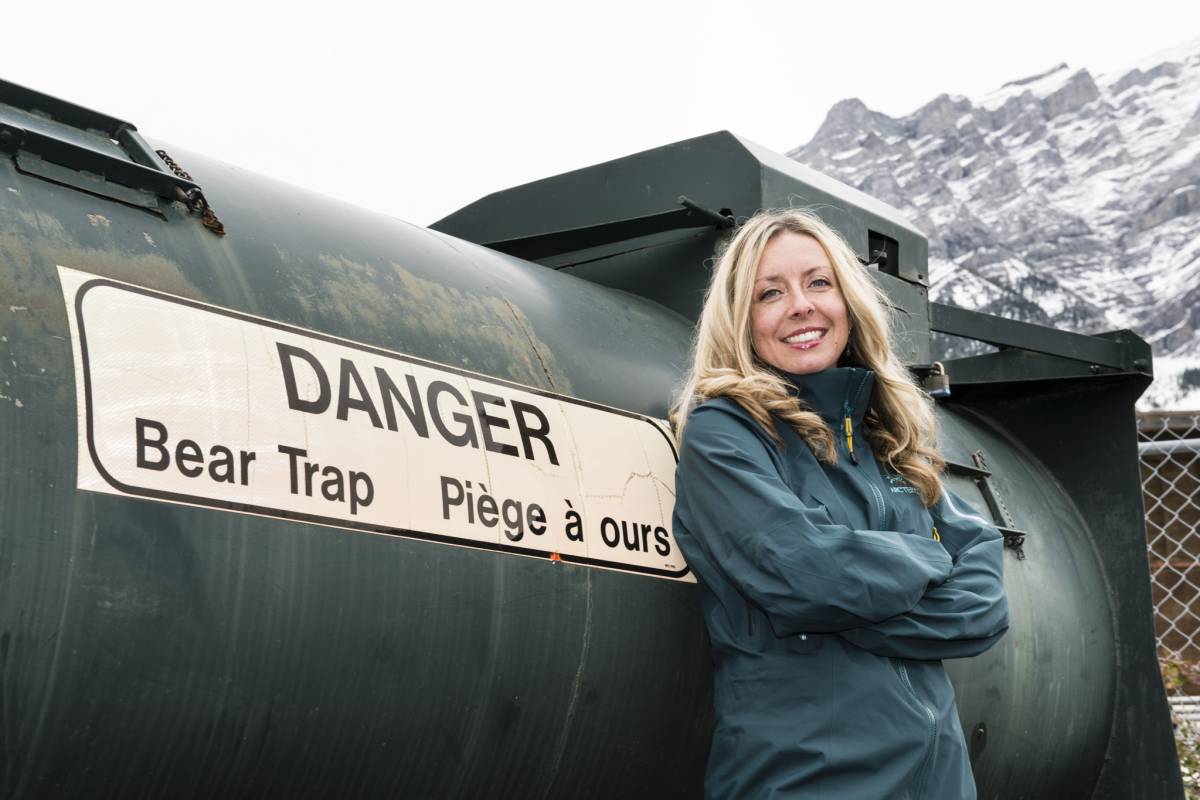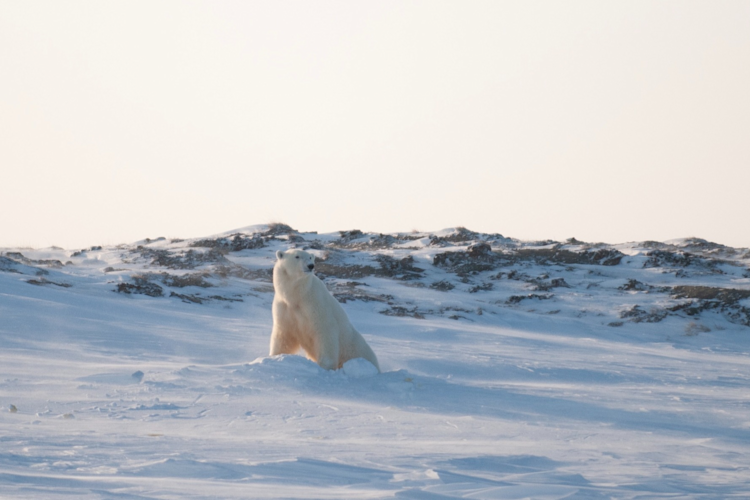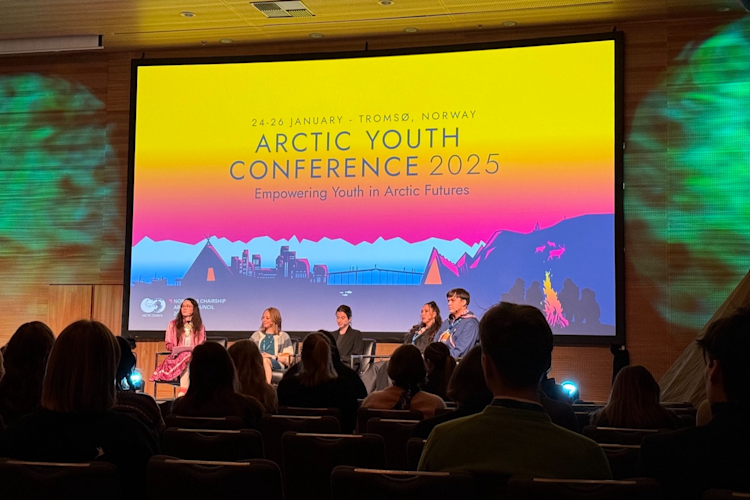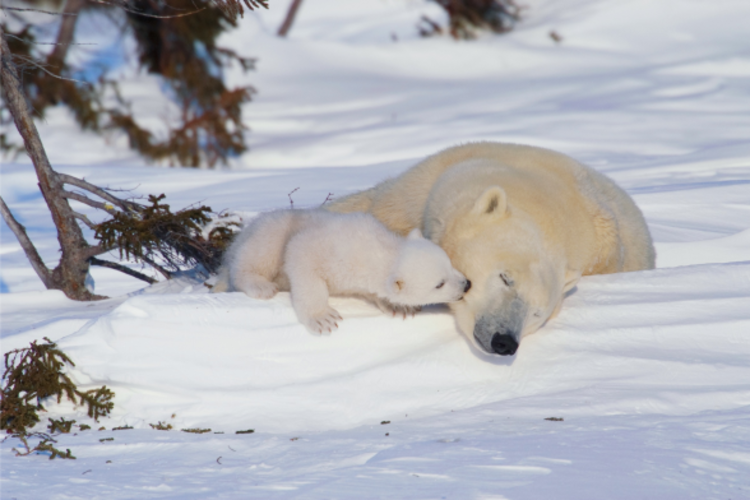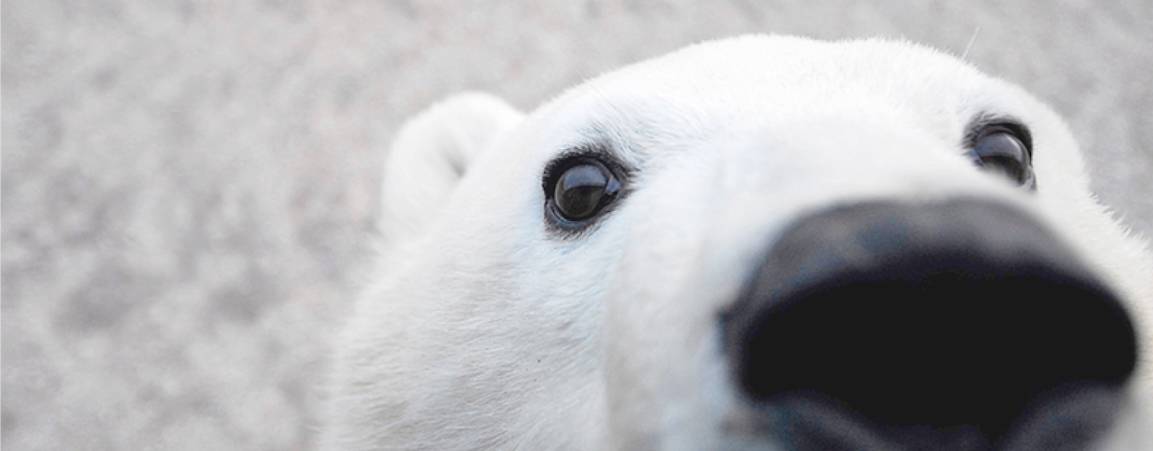A few years back my friend Jason Bantle asked me to help him come up with a title for a photography book he was writing on polar bears. Like all bears, polar bears are a species that often get a bad rap with humans. Too often, the first thing I hear when I mention them is, “Oh, they like to eat people. Very dangerous!”
So, I took the opportunity to provide a new perspective and describe bears in the way I see them. Bears are gracious. Not all the time, but, for the most part, they put up with a lot from us. For such ‘’dangerous animals” they rarely attack or kill humans. I took one look at the cover image of Jason’s book—a photo of a confident, strong female polar bear, standing on the ice—and thought “Grace.”
Bears often grace us with their presence, and it is their willingness to share space with us, to choose to leave when they hear us coming, to allow people to snap their picture while they try to survive in one of the world’s harshest and fastest changing climates, that for me embodies their grace. So, I suggested State of Grace: A Photographic Tribute to Canada’s Polar Bears, and that’s the title he used.
Bears are enormously generous with their tolerance of us, but how must we adapt to their presence to ensure their longevity on the landscape?
My area of work has primarily been with black and grizzly bears in Western Canada, Alaska, and the few places left where grizzlies still roam in the lower 48 of the United States. I have spent the past 20 years helping humans learn to live, recreate, and work in habitats where bears live and to find their own solutions to reduce conflict and help sustain bear populations.
One thing that always stands out to me is that bears usually choose to avoid conflict with us. They’ve had no choice but to learn to adapt to our presence. We are the new neighbors, day walkers on their lands and seas. When we build our homes, trails, and take natural resources from their habitat, we do so with little thought of the bears. And because of that, for the most part, we humans are the cause of the majority of the conflicts that occur between bears and people.
Sadly, the solution often proposed when bear conflicts occur is to hunt them more, to “get more guns for protection.” Flawed beliefs are widespread and often perpetuated by media coverage: “There must be too many of them, we can’t possibly be the cause!” “They must be ‘rogue’ to do such damage.” Most of the time when I hear of a bear conflict, I’m able to pinpoint that the cause is linked to our inability to understand what coexistence actually means. It means compromise—on our part. To coexist with any bear, we must change the way we live and work in their habitat. We must choose to manage wildlife attractants and educate ourselves about bear-safe practices. But few do.
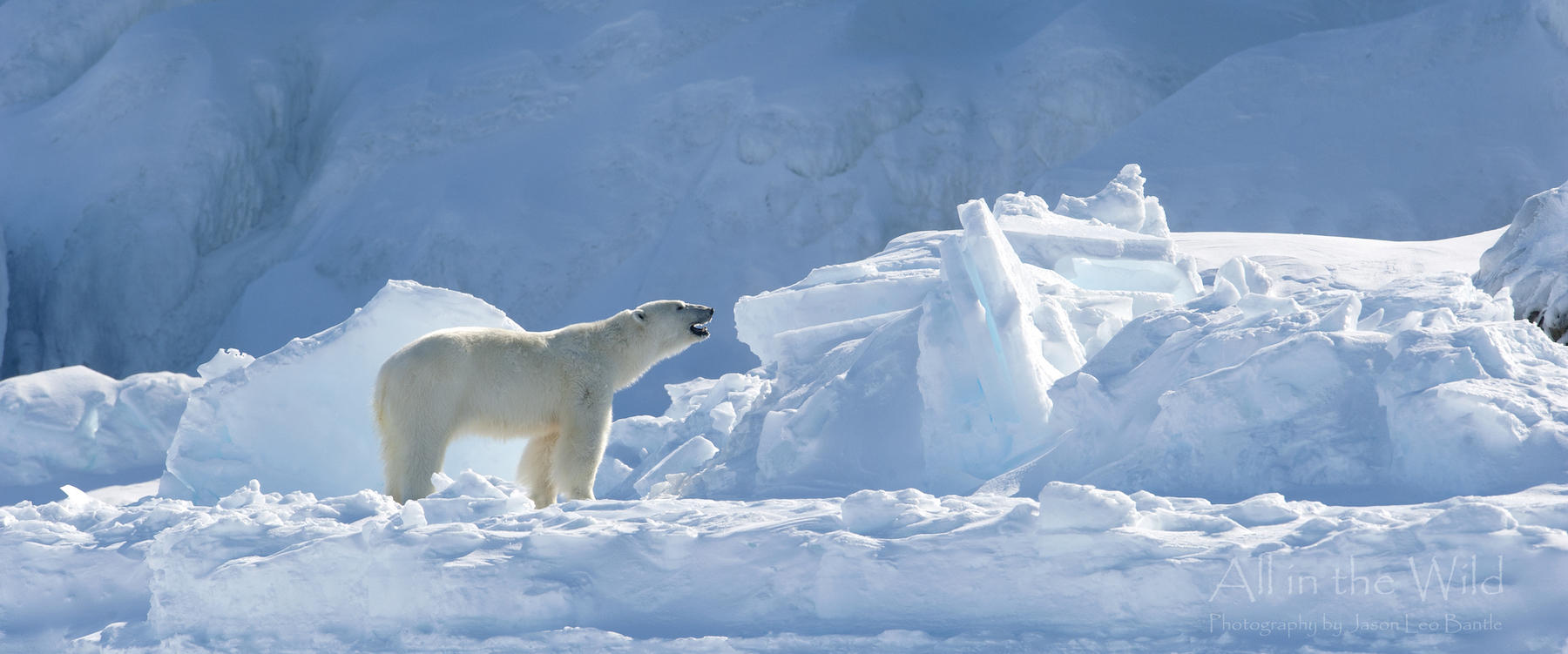
Photo: Jason Bantle
I recently worked as a consultant for Polar Bears International to help determine how Arctic communities can prepare to live with polar bears in increasing closeness as sea ice melts and the landscape shifts. I learned from the people of the North: their values and beliefs about how it should be and, in some cases, how it once was. I was not there to tell them how to live with polar bears, but to ask, “What are you willing to compromise to make it work?” The first peoples have been living with bears for thousands of years. But polar bears and Arctic communities are now experiencing the impacts of climate warming, with bears spending more time on land and closer to communities, where they can gain access to attractants like garbage and landfills.
None of the challenges have an overnight fix, but are there compromises we can make now to live better with these animals? Yes. It’s possible, I’ve seen it. I worked with the community of Canmore, Alberta, for 10 years, helping them find ways to reduce conflicts and better coexist with bears. The community of Churchill, Manitoba, has also been successful at reducing conflicts through proper waste management (although a recent fire at their waste facility has presented new challenges), integrating a Polar Bear Alert program, and creating a Churchill Bear Safe Working Group to continue progress.
Access to human food and garbage is a serious and growing threat to polar bears. It draws bears into communities and camps and increases negative interactions that may result in the injury or death of people and relocation or destruction of polar bears. Government agencies need to clean up their landfills and provide residents and business owners with bear-resistant bins. Many communities with polar bears are ill-prepared for the negative impacts of human-food conditioned bears. Reducing the risk to people and bears needs to be a priority, especially for communities that are just starting to see polar bears frequenting their lands. The importance of waste management can’t be overstated—it protects people and saves polar bears immediately.
The other solutions needed for polar bear conservation require more complex and cooperative compromises. When I had the honor of meeting members of the community of Churchill, their government agencies, and local business owners, I collated their concerns, ideas, and experience to create the first stage of a polar bear hazard assessment for the region. Common themes came from these discussions that may be of value to communities throughout the Arctic who are now, or soon will be, living with polar bears.
A glimpse at solutions includes educating communities and visitors on polar bear safety to increase public awareness and reduce human-bear conflicts. The polar bear guiding industry needs their own set of guidelines. The tourism-marketing agencies that bring people to these destinations need to advertise a more realistic picture of the experience people will and should have with polar bears. Industry needs to train their staff and manage wildlife attractants, not just assume a bear guard with a gun is their only option. Working with Indigenous communities and valuing their perspective through co-management will be key to the future of coexistence.
I strongly encourage the media to rethink their terminology when reporting on bear conflicts. Words like rogue, stalking and rampant are terms that put the blame on the animal for the incidents and fail to address the root cause of the conflict. These words make people more scared, and they feel like there is no solution but to get rid of the bears. The media has the power to create hope, educate, and increase awareness and safety for residents. Journalists can also inspire people to change their behavior, making communities safer for bears and people. They can put pressure on governments to fund infrastructure for bear-resistant garbage bins and landfills, get more boots on the ground to monitor bear activity, and build support for community-based bear-safe initiatives.
An empowered and informed community willing to make practical compromises can change the narrative and find a bit of grace for an animal that extends so much of it to us.
Kim Titchener lives and works in bear country. The founder of Bear Safety & More, she travels across North America’s best bear habitat to educate communities and industries on how to live with bears and other wildlife.
